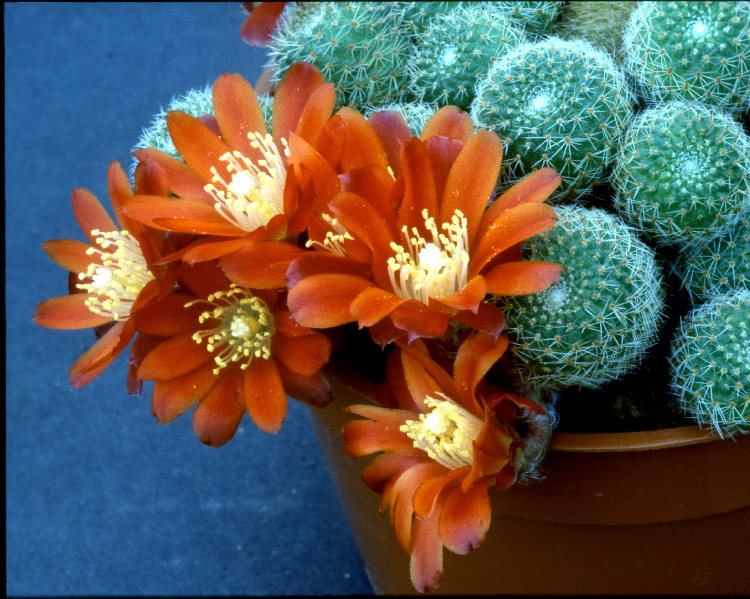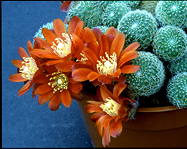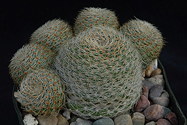Rebutia heliosa has long been a prize of many collections and would be represented in more were it not for its tendency to rot. Indications are that this newer subspecies may prove easier to maintain. Like the type subspecies, it is described as usually solitary in nature, but in cultivation it offsets rapidly to form a clump. The spines are not quite as appressed as in the typical subspecies and the areoles are not as elongated, but the broader bodies are nevertheless covered in glassy, golden, pectinate spination emerging from coppery-colored areoles. The flowers are more intensely red-orange with a pinkish blush to the outer tepals. First found in 1971 by Peruvian nurseryman Karel Knize, the entity was provisionally named Rebutia teresae in honor of Mrs. Teresa Ramirez of La Paz, Bolivia. It was found again in 2004 by Czech explorer Vaclav Seda and validly published in 2006 in the Czech journal Kaktusy (Vol. 42(3): 84-86). We offer plants from controlled pollination of K. Knize 1724, collected in the Cajas Pass, near Nogales, about 35 km NW of Tarija, Bolivia, at 2800 m. elevation. Seda’s collection was nearby at 2280 m. Rebutia heliosa var. cajasensis is similar and from the same area at 2500 m. While Anderson treats the latter variety as a synonym of R. heliosa and Hunt treats it as a synonym of R. fiebrigii, the subspecies teresae has not yet been synonymized. In addition to the accompanying photo of the plant in flower by Bill Weightman, a good closer view may be found on Wikimedia Commons. HBG 97077, $6.

Published in the Cactus and Succulent Journal, Vol. 82 (2), March - April, 2010

